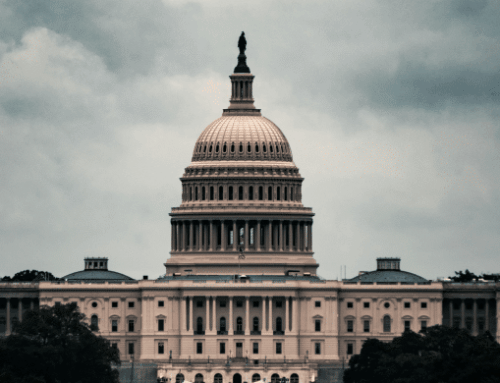The long-delayed long-range shipbuilding plan, due to Congress last February, was finally released last week. Prior to its public release, the National Security Advisor (Robert O’Brien) and Director of the Office of Management and Budget (Russell Vought) lifted the curtain on the plan in a Wall Street Journal editorial. There’s a lot that doesn’t add up across three recent documents on this topic: the shipbuilding plan itself, the editorial, and former Secretary of Defense Mark Esper’s Battle Force 2045.
First, and most obvious, the editorial states, “The White House will release a 30-year shipbuilding plan that devotes the resources necessary to making a 355-ship fleet a reality.” (Emphasis added) Well, the plan certainly didn’t devote the rhetorical and data resources to make that a persuasive reality. The entire fiscal discussion in the plan is one paragraph long. It boils down to this in the relatively short term, “A series of in depth Combatant Commander, Defense-wide, and Service reviews and reforms in the past year identified saving that could instead be budgeted to procure additional ships and associated readiness while staying within the FY2022 FYDP topline.”
The Future Year Defense Program (FYDP) runs through Fiscal Year 2026 and amounts to $147 billion being devoted to Shipbuilding and Conversion, Navy (SCN) to purchase 82 new ships under this plan. For reference sake, the projected FY22 SCN request, for the Trump Administration, is stated to be $22.8 billion (for 12 new ships) and rising sharply to $33.5 billion by FY26 (for 20 new ships). That’s a 50 percent increase in five years to pay for those 82 hulls. No word on those “identified savings” that will pay for this increase.
The then-Secretary of Defense also referred to his agreement to “harvest” more funding for the Navy from Pentagon-wide reform efforts. We point out that Secretary Esper is now known as Mr. Esper and we have to wonder if the gentleman currently warming the chair in the big office on the E Ring is also planning to ship (heh!) billions in non-Navy money to this shipbuilding effort. That’s saying nothing about the next person to serve as Secretary of Defense, in the incoming Biden Administration; will that person also favor shifting money from other priorities to shipbuilding? Too soon to tell.
The long-term plan also states, “Beyond the FYDP, the DoN funding required to grow and sustain the objective battle force paces forecast long-term U.S. economic growth (2.1% inflation and 2.0% real growth). This level of projected funding will address both the force structure described in this plan and the manning, training, operations, modernization and infrastructure required to sustain a larger fleet.”
This seems, at best, a stingy estimate. One of the dirty little secrets of Pentagon procurement is that the expensive part of a new weapon system isn’t buying the platform, it’s training up the force and maintaining the system for the next 40+ years. Procurement nightmare case in point: the costs to sustain the F-35 aircraft. (Note that the plan doesn’t say how long Department of Navy funding will need to increase at a rate of 2 percent real growth.) We’ll point out, as we did when discussing Secretary Esper’s plan, that the FY21 requested topline for the Department of the Navy is $207.1 billion. Using the figures supplied by the Navy in the long-term shipbuilding report, with inflation compounding annually, the Navy topline in 30 years would need to be $374.9 billion to support this plan. That’s more than half of the current topline for the entire Pentagon.
Tell us again about how Pentagon-wide reform efforts will pay for the first five years of this bloated plan. We’re all about the math here at Taxpayers for Common Sense, and we’d like the Pentagon to “show their work” like our high school algebra teacher used to say.
Then there are clear disconnects regarding when the Navy is expected to meet certain deadlines for more ships afloat. Secretary Esper, in October, said the Navy would have 355 “traditional Battle Force ships prior to 2035.” The O’Brien/Vought editorial states that goal will be met “within 10 years” – presumably in FY32. The Navy shipbuilding report promises 316 ships by FY26, with no specific date projected for a 355 ship Navy. It does, however, state that the plan is for an inventory of 403 ships by Fiscal Year 2045.
Certainly, some may believe this plan is dead in the water (see what we did there?) since the Trump Administration is about to make way for the Biden Administration. The new administration will have to scramble to produce a blueprint for the Fiscal Year 2022 budget request and hearings on the same will be much delayed by the need to confirm senior Pentagon officials. But this plan, as opposed to former Secretary Esper’s, was developed by Navy brass and is now in the hands of Congress. And the boosters of shipbuilding will certainly want to lock in place the plans for a new Constellation-class of frigates, a delivery rate of three Virginia-class submarines per year and a steady state of procurement of DDG-51s at two per year.
That’s to say nothing of this interesting tidbit, literally slipped into a footnote about the new frigates. The note points out that estimated costs include, “investments to stand up a ‘follow yard’ to increase procurement quantity.” That sounds a lot like a plan to expand the industrial base to include another shipyard to build mid-sized surface combatants. If that happens, expect every shipbuilder in the country to want a piece of that action. That may sound like more competition, but it’s equally likely to mean more shipbuilding mouths to feed when procurement declines in the future.
The Biden Administration, should they make downward adjustments to these five year and thirty year plans, will be accused of drastic cuts to shipbuilding. We’ll be here to point out that a plan is not actual procurement. And we’ll be reading the fine print of the first Biden Administration Pentagon budget request to see if fiscal common sense takes hold over pie-in-the-sky plans for spending on ships.










